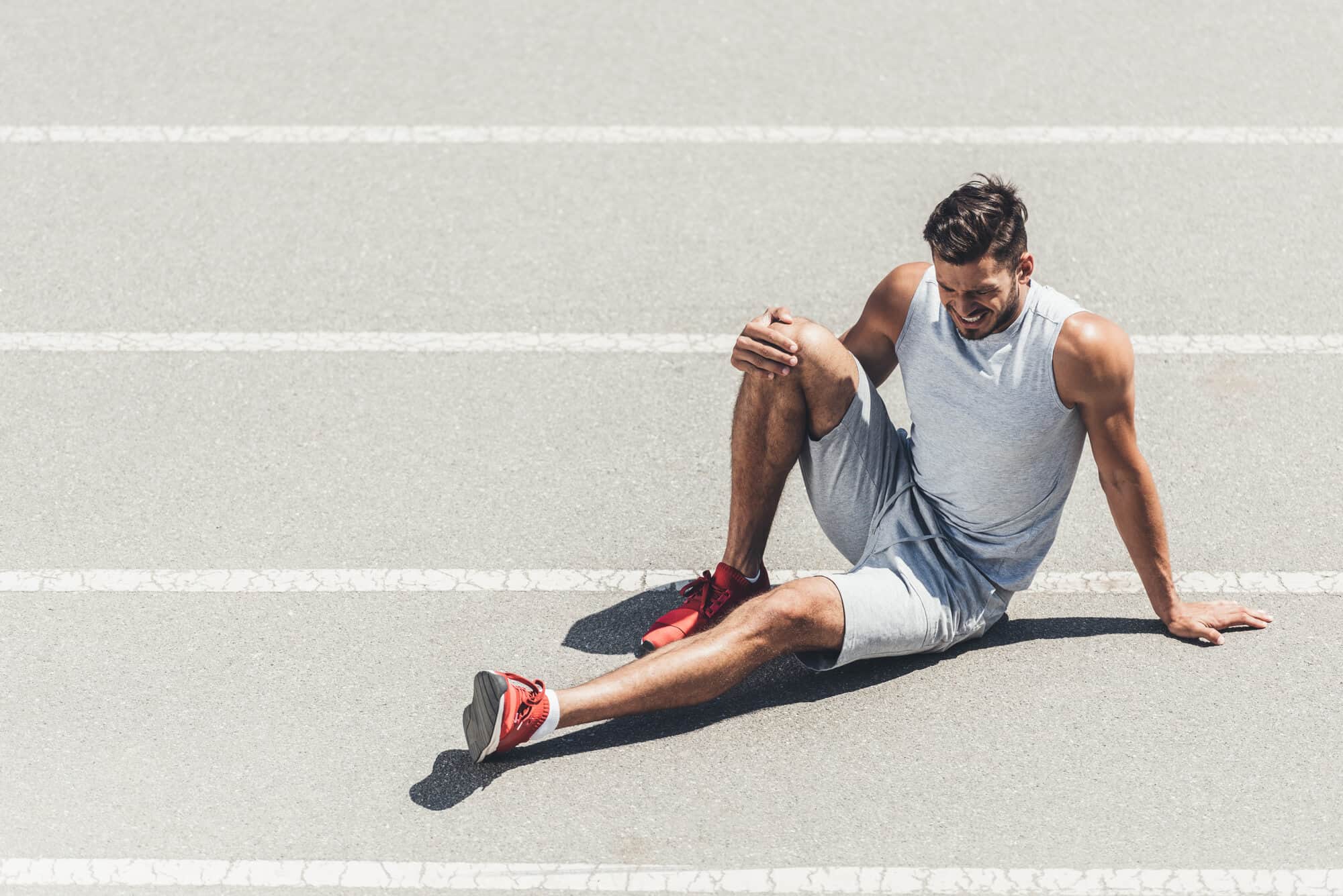One of the most common questions that runners ask is “why do my knees hurt when I run?”, and in today’s article, we’ll tackle this question!
Although running is one of the healthiest activities, it’s still considered a high impact exercise. In fact, running injuries are surprisingly common, and according to a Sports Medicine study, around 37% to 56% of all runners get injured every year.
Due to the nature of running, the majority of the injuries suffered during the exercise are focused on the knee. However, knee injuries can also vary significantly depending on their nature and severity.
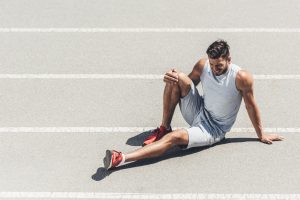
To help you identify the cause of your knee pain and how to deal with it, here’s a brief guide with everything you should know!
What Are the Most Common Causes for Knee Pain?
Although pain is the most common symptom of a knee injury after running, it can still happen due to a variety of reasons and in different locations.
In this section, we’ll take a closer look at some of those reasons to help you have a better understanding of your knee pain:
1. Patellofemoral Pain Syndrome
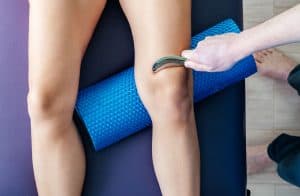
This one is also known as “runner’s knee”, “runners knee”, or “anterior knee pain syndrome”. This one is easily the most commonly diagnosed knee joint injury out there, making up to 40% of all knee-related injuries.
This condition usually causes dull or aching pain that usually surrounds the knee cap (known as the patella), which is where it got its name. This pain is usually aggravated by bending the knees for a long time or running downstairs or downhill.
Causes
Knee pain due to this condition can happen due to various reasons, which all result in irritating or inflaming the knee cap.
The most common one of them is the general weakness of the leg muscles, especially the quadriceps (thigh muscles), which puts a lot of load on the knee cap directly.
In addition to weak muscles, running with the incorrect type of shoes can result in a misaligned gait or improper running form.
Moreover, tight hamstrings and Achilles tendons can also cause this kind of pain around the knees.
Treatment
Despite being common, runner’s knee is usually mild, so most people can still run if the pain is quite tolerable. Not only that, but it also heals with time, especially if you give your knees proper rest.
The best course of treatment for runners knee involve the following methods:
- Resting or reducing the impact of your exercise
- Elevating the legs while using compression bands
- Icing your knees with cold packs
- Taking over the counter pain medications like ibuprofen
- Wearing orthopedic running shoes with better arch support
Performing exercises to strengthen your leg muscles and tendons should also prevent the condition from occurring again.
2. Bursitis
Bursitis is an inflammation of the bursae, which are pad-like sacs that are filled with liquid that help in reducing the friction between knee parts. The knee bursae, called “pes anserine bursa”.
Knee bursitis usually causes inflammation and pain, but the location varies depending on the inflamed sac.
For that reason, the pain could be on the inner side of the knee, at the top of the knee, or just below the joint.
Causes
Since knee bursitis is an overuse injury, the most common reason for this condition is a repetitive strain on the knee joint that causes significant inflammation, which usually happens when you suddenly ramp up your mileage or running speed for several days or weeks.
Treatment
The course of treatment here is pretty similar to runner’s knee, so you should consider resting and elevating your injured leg while applying cold packs and compression on the knee.
You can also use pain relievers and doctors may prescribe corticosteroid injections in severe inflammation.
3. Iliotibial Band Syndrome
The iliotibial band, or IT band for short, is a thick connective tissue band that runs from the ilium bone of the pelvis all the way to the tibia (the shinbone). This band is mainly responsible for stabilizing our knees while running.
The iliotibial band syndrome usually causes stabbing pain that is felt towards the outside of the knees.
Causes
Extensive training without proper warm up puts extra load on the iliotibial band, especially the tensor fasciae latae muscle (TFL). This causes remarkable tightness of the band, especially the outer area of the knee.
The tight band then becomes irritated and causes noticeable pain because it moves forward and backward while running when it’s tight.
Treatment
Although the pain in IT band syndrome is quite sharp, the pain should go away within 4 to 8 weeks depending on the severity of the condition and your recovery speed.
You can always speed up your recovery by resting, icing, compression, and elevation, which is known as the “R.I.C.E Protocol”. Additionally, other methods can also help in alleviating and preventing the symptoms of the condition, such as:
- Using foam rollers
- Massaging the knee joint area
- Stretching before exercise
- Workouts to strengthen to hips and core muscles
4. Patellar Tendinitis
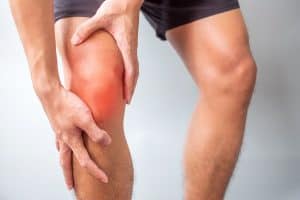
This one is also known as “jumpers knee”, which is also considered an overuse injury that is quite common among runners.
As the name suggests, the condition is an acute inflammation in the patellar tendon, which is the tendon that connects the kneecap with the shinbone.
For that reason, the pain is usually noticeable below the kneecap, especially while running. Yet, if you continue running without proper treatment, the condition will develop into a continuous pain that extends several hours after working out.
Causes
Patellar tendonitis can occur whether you’ve put your patellar tendon through heavy use or as an injury due to a sudden misaligned move.
In that case, the tendon may suffer a small tear that is more noticeable when the tendon is in use (while skipping or jumping).
Treatment
Working out or running with a partial tear in a tendon can actually turn it into a larger, more painful tear.
For that reason, the best thing to do in order to treat patellar tendonitis is to stop running immediately and allow your body to rest and heal.
Of course, R.I.C.E protocol and massaging the knee will help in speeding up the recovery. It’s also important to get checked by a healthcare professional if you suspect a tendon injury to assess the damage.
5. Meniscus Tear
The meniscus is a shock absorbing cartilage that is placed around the knee joint in order to prevent friction between the tibia (shin bone) and the femur (thigh bone).
If you suffer from a meniscus tear, you’ll feel a sharp pain all over your knees that increases as you try to fully extend your legs. This is because the meniscus cartilage has to wedges on the inside and the outside of the knee joint.
Causes
Unlike the previously mentioned conditions, this cartilage will usually suffer a tear due to a sudden change in direction while running or due to a wrong movement, although the risk of tearing the meniscus increases among older runners.
Treatment
Minor meniscus tears can heal on their own by resting for a few weeks until your knee heals, especially while following the R.I.C.E protocol.
However, if the tear was large, you may get referred to an orthopedic surgeon to eliminate the necessity of surgical intervention.
6. Baker’s Cyst
This one is also known as “popliteal cyst”, which is a fluid-filled swelling that usually arises at the back of the knee joint, which is why the pain is mostly felt at the back of the knee.
In addition to the pain, you will notice some swelling in the knee followed by tightness or stiffness in the joint.
Causes
Unlike all previous cases, Baker’s cyst rarely comes on its own and isn’t considered a running-related injury.
Instead, it’s usually considered a form of complication to other running related injuries, such as meniscus tears. Additionally, other chronic conditions, such as knee arthritis, can also cause this problem.
Treatment
Treatment of Baker’s cyst usually relies on treating all the underlying conditions that cause it. As for the cyst itself, it will usually go away on its own by resting and following the R.I.C.E protocol.
When to Seek Medical Professional Help?
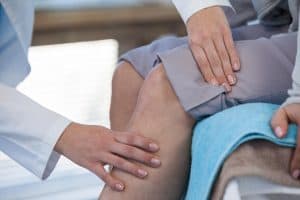
As you can see from the previous conditions,every knee problem is different and varies depending on severity.
Luckily, not every knee injury out there is serious and you can still workout if you suffer from a mildly sore knee. Yet, seeking the advice of a medical professional and wearing a proper running shoe are always recommended to avoid worsening your knee pain.
Final Thoughts On Why Do My Knees Hurt When I Run
There you have it! A brief guide that walks you through some of the most common causes for knee pain.
As you now know, there’s a wide range of reasons why your knee will hurt you while running. However, with the help of this guide, you can have a better understanding of the cause of the pain and how you should deal with it.

